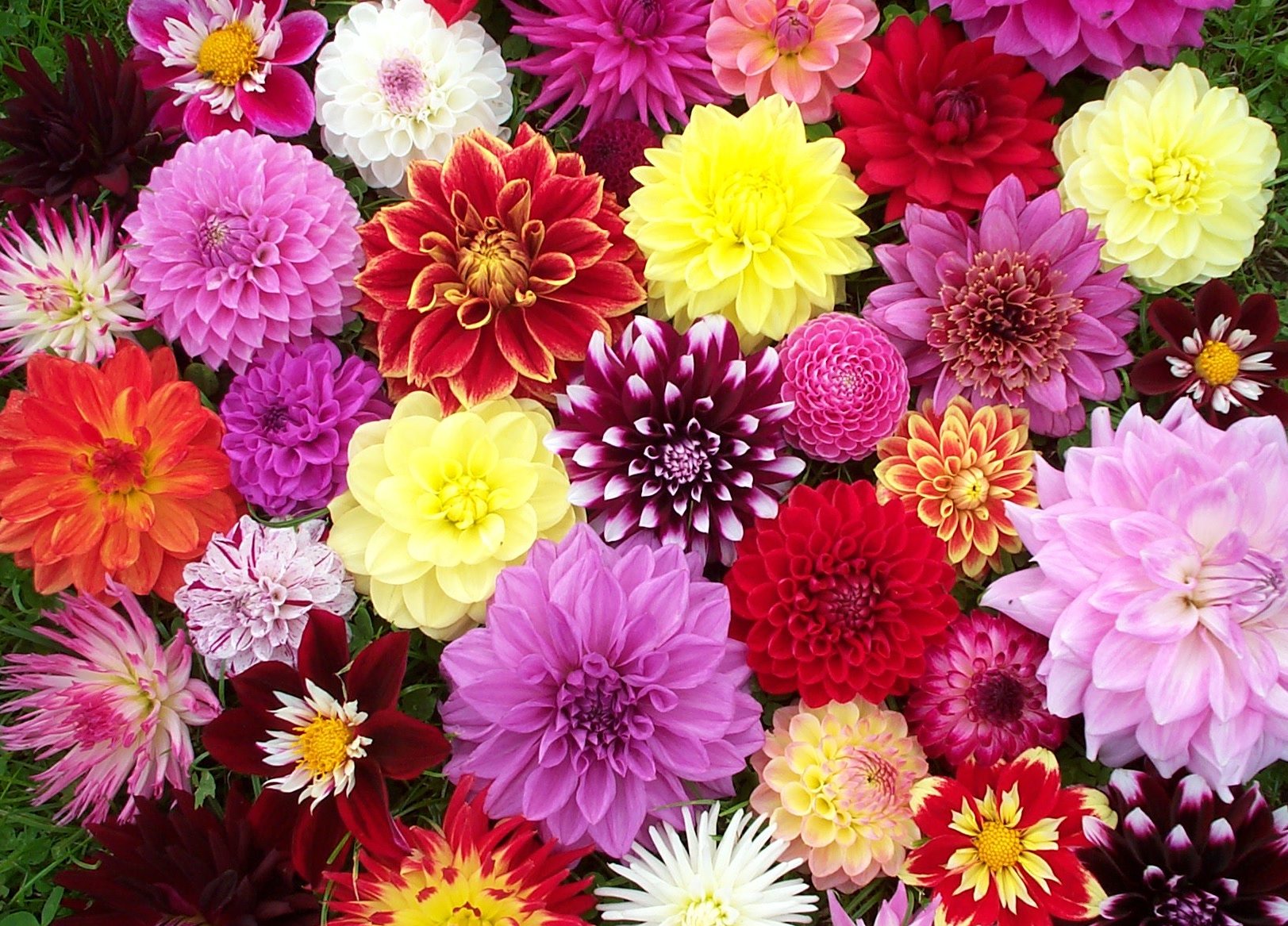
Dahlia is a popular autumn flower. The shape, height, size of the flower are different, but there is a common thing for them - beauty. September heat contributes to longevity. In the absence of frost, flowering is observed even in October. Dahlias and their reproduction - is a curious process that requires an exhaustive answer. Gardeners often ask how dahlias breed? No less often ask the question, how to divide dahlias? Effective propagation of dahlias by tubers.
Content
We dig up planting material before dividing
If dahlia propagation is not planned, it is necessary to divide the bushes annually. If the plant has no more than two stems, then the flowers will be large in size. In the opposite case, the size of the flowers will be less, their brightness and saturation will disappear. The division of dahlias in the fall leads to the fact that the bush becomes younger.
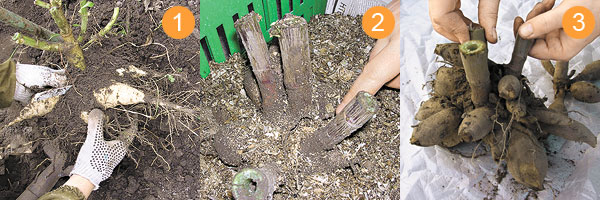
The bushes are dug up immediately after the start of frost. Someone is in no hurry to dig a plant. After all, it is quite possible that warm weather will still be established. The first frosts will affect only new blossoming flowers. The plant itself as a whole will not suffer from them. But one should not forget that if frosts “break out”, the stem can be damaged and rot. We must not miss the time and dig on time. After all, rot from the stem can go to the tuber. Therefore, any experienced gardener will say that timeliness is a determining factor in carrying out such events.
Dahlia is not a gladiolus. There are no increased requirements for weather conditions. Therefore, you can dig out even in rainy weather. If there are a lot of plants, then all of them will not be planted. It is not necessary to dig up every single plant. It is necessary to dig up the required quantity, plus a small supply. What remains in the earth will decay and serve as a good fertilizer.
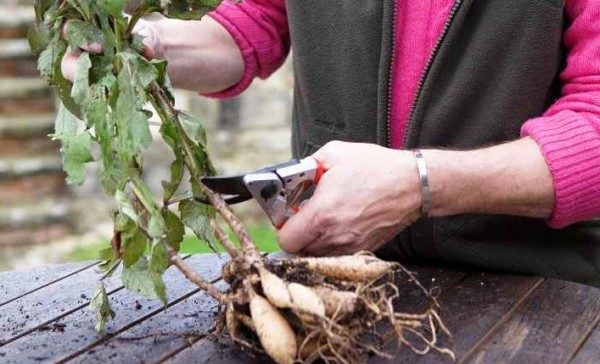
How to Share Dahlia Tubers
The choice is determined in favor of large bushes, abundantly flowering. Before digging, the stems are cut off with the formation of stumps up to 30 cm high. This is a protection against breaking the stems when digging. Indeed, in this case, the neck of the root may also be damaged. The earth must be shaken off, and what is left should be washed off with water. Along with washing, small underdeveloped tubers are removed. But the main tubers that extend from the neck are left. They will have to be divided in the spring.
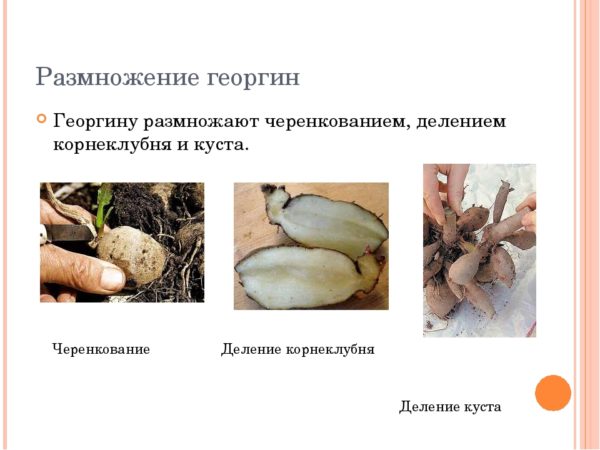
Tuber preparation
After that, repeated washing of the tubers with water is carried out. Another circumcision is carried out, leaving a stem 1-2 cm long. During storage in winter, the material can rot. The start of the process is precisely the stem. A couple of days, he matured on the veranda. With severe frosts, it is cleaned in a place inaccessible to them.
Tuber division
Everything must be done carefully. To do this, the stalk is shaken. Maternal cutting may be required.
How to split dahlia tuber?
Many people ask when to split dahlias in spring or autumn. In fact, you can do this in any of these periods.
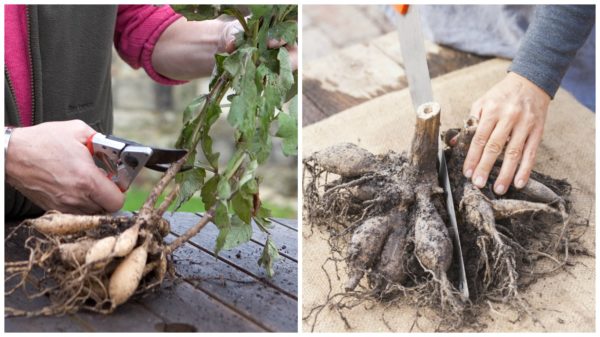
Autumn division
Anyone who does this in the fall should have a clear idea of how to divide dahlia tubers in the fall. These manipulations should be carried out using a sharpened cutting tool. It is permissible to use a knife or scissors.
How to do the division
- Using a sharp knife, split the remaining part of the stem into two parts. In this case, the growth kidney should be located on both sides. Everything must be done as carefully as possible and not to allow the stem to detach from the rhizome. In principle, there will not be much trouble if such a thing does happen.
- Rhizome stretches to the sides. After this, the seed is inspected. If there are a lot of kidneys, then the procedure is repeated. In a similar way, one large root can be divided into several parts. A new plant will be formed from them.
- An ideal planting material is a whole tuber or part of it, on which there is a kidney. If there are two kidneys, then repeated cutting is carried out on a cutting board. It is necessary to use a sharp knife. The above algorithm of actions is the answer to the question of how to split dahlias in autumn.
Spring division
Regarding the time of separation, gardeners do not have a single opinion. Some believe that autumn for such an event is the best period. Others are of a different opinion. In winter, as a result of natural selection, the kidneys are well defined. Therefore, separation is best done in the spring, they say. If this is done in the spring, then 3 weeks before planting, the material is taken from the place of storage and inspected. If the kidneys are alive and have moved away from hibernation, the tubers are separated. The buds may not be visible as the tubers dry out. They must be sprinkled with water, and left for a while to germinate. Then they are separated.
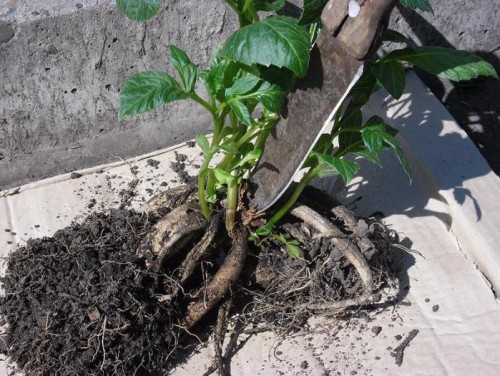
Reproduction of dahlia cuttings
Cuttings are an effective way of propagation. For this, grown young plants are used. It is better to do this in the greenhouse, but you can also in a cold greenhouse. An own root system is formed. When creating favorable conditions, continuous development takes place. Shallowly planted rooted cuttings. With the arrangement of seedlings in a pot, the planting is carried out deeper. The lump falls below the soil surface by 7 cm.
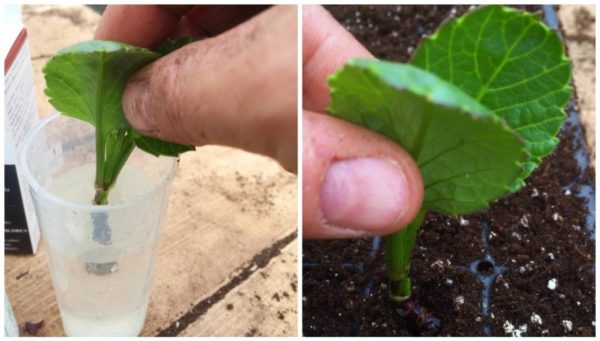
It is necessary to divide the bush into parts without fail. An escape appears from below, and it is very difficult to get a stalk of the required quality from it. Better to work with short cuttings.
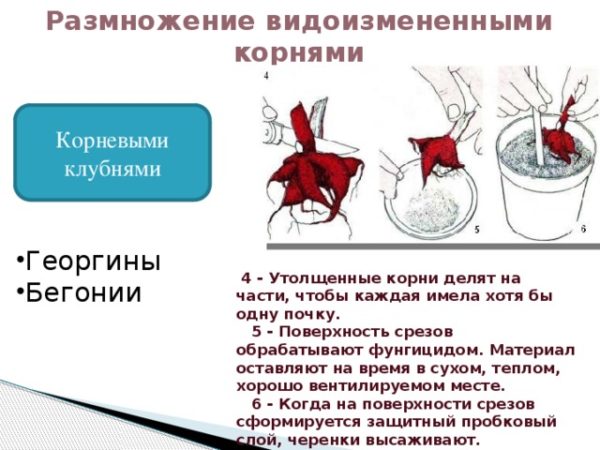
Propagation of Dahlia tubers
Tubers in March should migrate to a warm room. A sufficient amount of light is required. Here they are germinated. Before that, everything that has been damaged is removed. For ten minutes, planting material is lowered into a weak solution of potassium permanganate (0.2%). Then it is planted in boxes and sprinkled with sandy soil. The root neck is open, the earth is wet. After 10 days, divide. To this end, the root tubers are cut into pieces. Each contains at least one eye. When planting, the incision remains free of backfill.
How to store dahlia tubers
- Storage in boxes. Tubers are stacked with their roots down on a layer of peat. Sand or sawdust is used.
- Can be stored in the sand. It must be well dried. On top of the box is covered with burlap. In winter, the condition of the roots is easily checked.The biggest danger is excess moisture.
- Paraffin storage. The method is laborious, but effective. Paraffin will inhibit moisture, heat

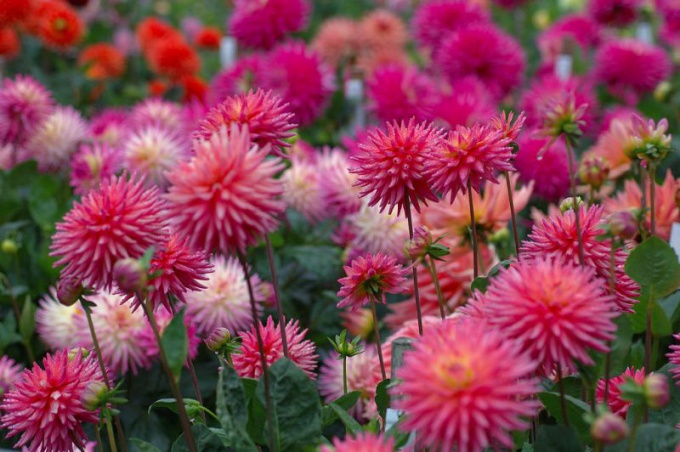

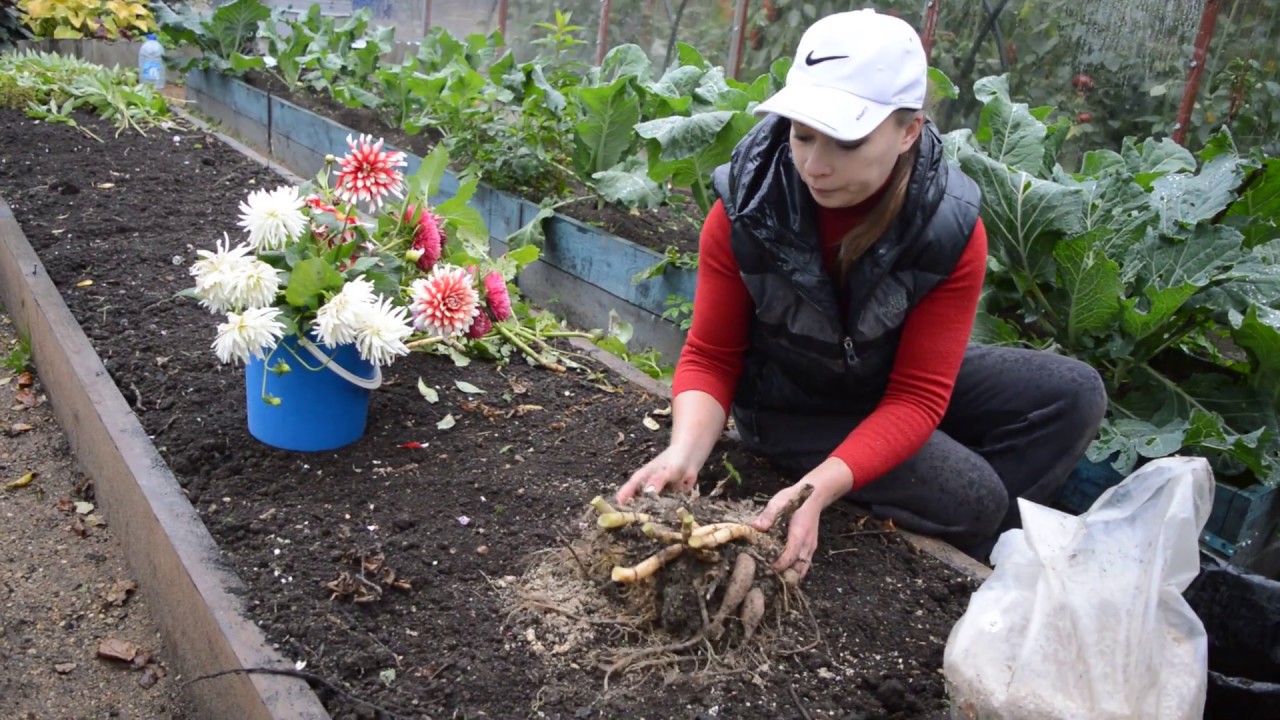
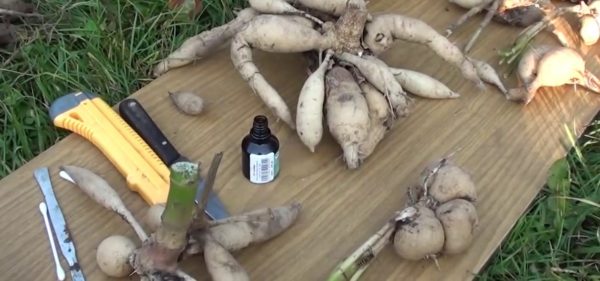
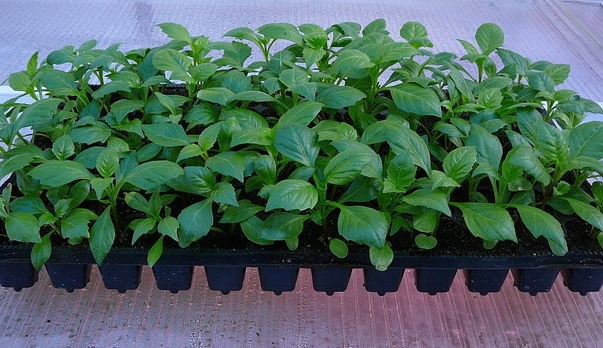 When to plant annual dahlias for seedlings according to the lunar calendar in 2018
When to plant annual dahlias for seedlings according to the lunar calendar in 2018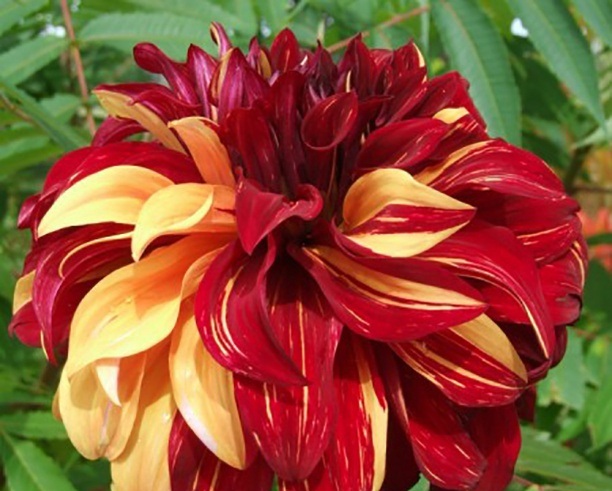 Description of the decorative dahlia "Bohemian Spartacus"
Description of the decorative dahlia "Bohemian Spartacus"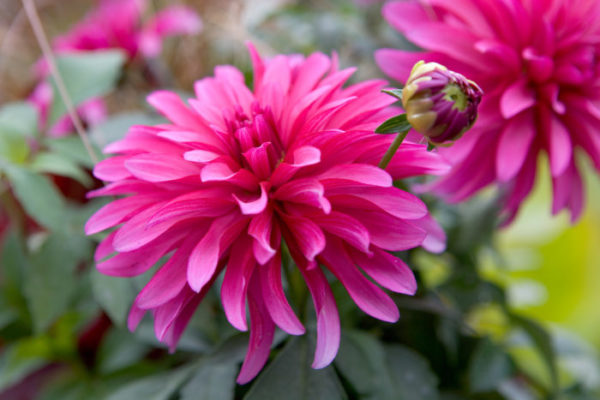 Dahlia Gallery: description of varieties, photo
Dahlia Gallery: description of varieties, photo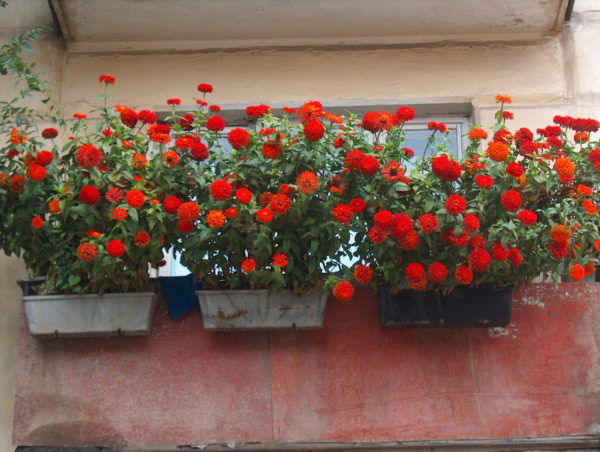 Planting and care of dahlias in pots and on the balcony (photo)
Planting and care of dahlias in pots and on the balcony (photo)